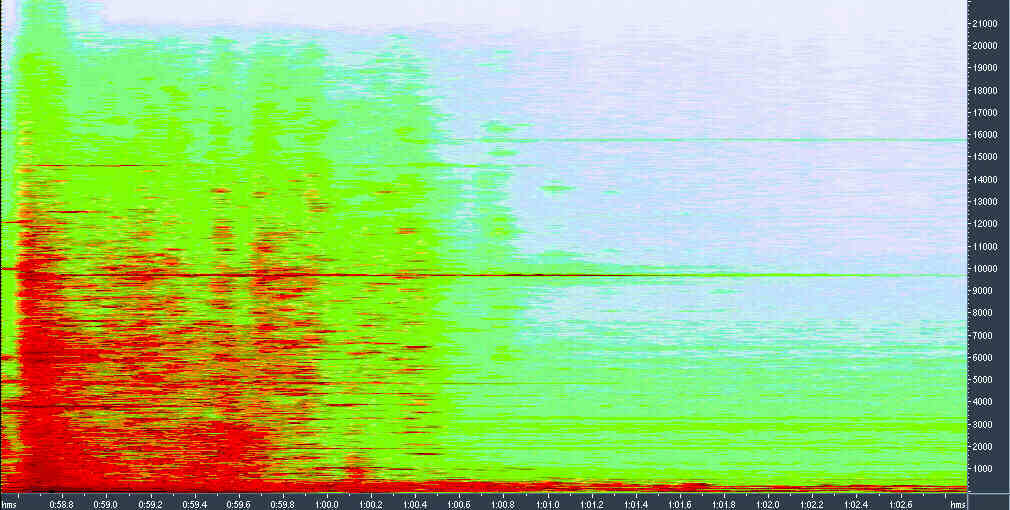Spectro-morphological Structuring Process in Gilles Gobeil’s “Le Vertige Inconnu”
Introduction
Introduction | Spectral Overview | Section A | Section B | Section C | Section D | Section E | Summary | Resources
Gilles Gobeil’s 1992 composition “Le Vertige Inconnu” has quickly gained a reputation as a masterpiece of electroacoustic music due to its explosively dynamic and expressive structural direction. The purpose of this analysis is to explain the perceived integrity of a work that continues to achieve a positive consensus among composers, students, and audiences, or what Smalley refers to as a “consensus about the efficacy or failure of particular musical works, thus indicating an instinctive evaluation of the newer spectro-morphological values.”[1] Its expressive shape denotes an underlying structural cohesiveness transcending the mimetic qualities of its source material. The consensus on this piece points largely to structuring principles wholly independent of the concrete meaning of the subways, crickets, and other noises within this work. Instead, abstracted shapes work to create a sense of direction wholly independent of any associative meaning created by the sounding objects themselves. Spectro-morphology is by no means the only method of analysis for electro-acoustic works; however, it is a means of describing the processes of the sounds themselves. In other words, spectro-morphology is the language of non-mimetic material, or at least the non-mimetic aspect of sonic material. Therefore, spectro-morphology requires disassociative listening- divorcing oneself from any external context, social or linguistic, presented by the sounding objects themselves.
This analysis makes use of spectrographs to document the sounding energy of “Le Vertige Inconnu.” In these spectrographs, the Y-axis represents frequency bands, the X-axis represents time, and the color intensity represents relative energy within the frequency band. Our perception of sound is inescapably linked to our familiarity with physical gesture. The listener associates high-energy sound with high kinetic energy causation. The morphology of a sound is concerned with the onset of sound, either by physical or electronic means, and its motion towards the termination of the sound. The attack-decay archetype is a common physical model as it suggests a strong kinetic causation and the gradual diminishment of energy towards termination. Below is a spectrograph of a basic attack-decay gesture:
Attack-decay Archetype
click on the picture for sound
This image from 58 second into “Le Vertige Inconnu” represents the primary structural motive of the work. As the gesture moves towards termination, the high frequencies diminish in energy more quickly, moving the attention towards the sound’s low frequencies, thus creating a descending attack-decay gesture. By contrast, the next image is of a reversed attack-decay gesture. Its onset is less causative in the morphology of the sound and its motion towards termination is through an increase in spectral energy:
Attack-decay Archetype
click on the pictures for sound
The morphologies that exist within a sound are reflected on various structural levels of the composition. The generative role of the onset, the motion towards termination or a new onset, and the presence of sustain portions of the sound, or continuants, occur at the lowest structural level. Likewise, larger structures will move away from the generative onset gestures towards terminating gestures. As textural-carried material is concerned with internal motion and not with external goals, it presents the higher-level corollary of the continuant. At the highest structural level, texture and gesture work as a dynamic dichotomy, reflecting similar motion patterns found at lower structural levels.
[1]Denis Smalley, “Spectro-morphology and Structuring Process” from The Language of Electroacoustic Music, ed. Simon Emmerson; Hardwood Academic Publishers: New York, 1986: 63.
Introduction | Spectral Overview | Section A | Section B | Section C | Section D | Section E | Summary | Resources


Social top